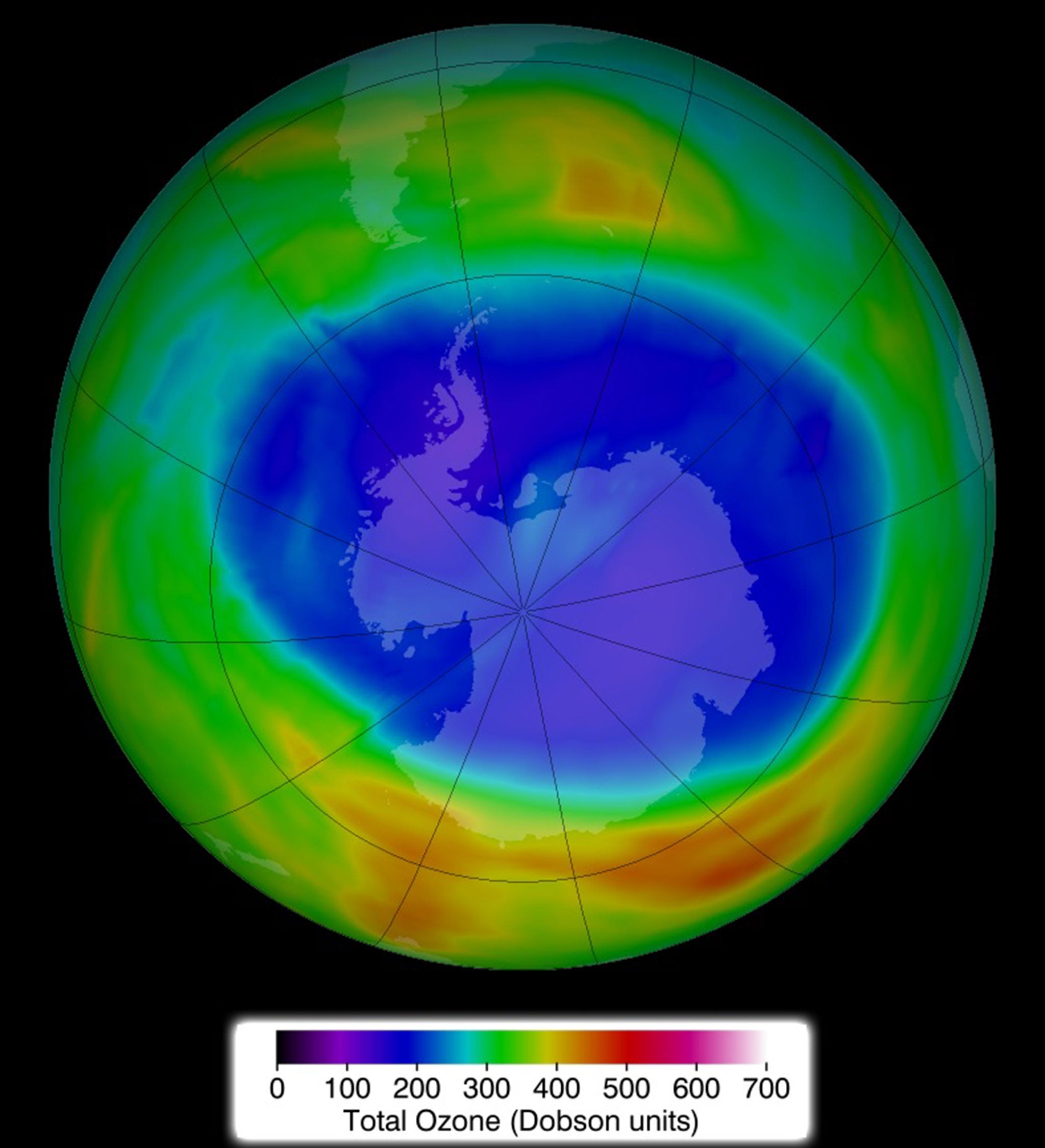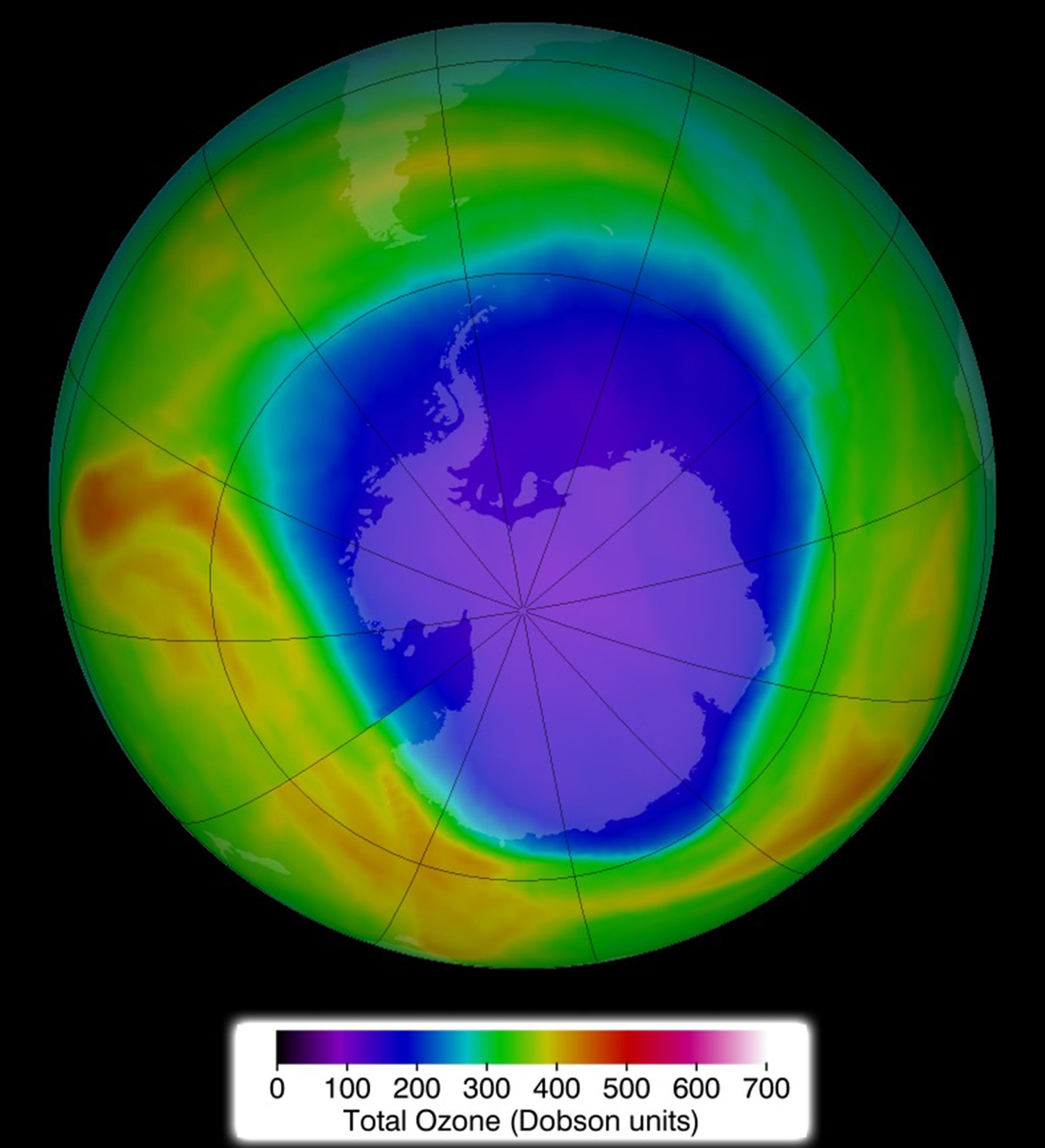Hole in ozone layer above Antarctica reaches size of North America
Nasa said the largest holes were seen in the 1990s and early 2000s

The hole in the ozone layer reached the size of North America last month, Nasa has revealed, although it is believed to be "healing" after treaties to reduce the damage.
Along with the space agency, the National Oceanic and Atmospheric Administration (NOAA) keeps a constant watch on the hole above the Antarctic, which reached its annual peak on 11 September.
The size of this year’s hole at its largest point was 9.3 million square miles (24.1 million square kilometres) – almost identical to the maximum in 2013.
It is far smaller than the largest single-day ozone hole ever recorded by a satellite, which was 11.5 million square miles (29.9 million square kilometres) in September 2000.
The phenomenon was worst between 1998 and 2006 and ozone levels in the hole area seem to be gradually recovering.
The hole forms and expands over the Antarctic during the Southern Hemisphere spring between August and September.

The depletion of the ozone layer became a cause of international concern because it is needed to shield life on Earth from potentially harmful ultraviolet radiation that can cause skin cancer and damage plants.
The Montreal Protocol of in 1987 aimed to protect the ozone layer by reducing production of substances responsible for depleting it, such as chlorine and bromine, found in chlorofluorocarbons and halons.
In 2014, the level of these substances had declined by about nine per cent from the record maximum in 2000.
But scientists are working to determine whether the reduction in the hole’s size is a result of the reduction in chlorine or temperature increases, which would also decrease its size.

Paul Newman, the chief scientist for atmosphere at NASA's Goddard Space Flight Centre, said: “Year-to-year weather variability significantly impacts Antarctica ozone because warmer stratospheric temperatures can reduce ozone depletion.
“The ozone hole area is smaller than what we saw in the late-1990s and early 2000s, and we know that chlorine levels are decreasing.
“However, we are still uncertain about whether a long-term Antarctic stratospheric temperature warming might be reducing this ozone depletion.”
The minimum thickness of ozone layer this year was recorded at 114 Dobson units, equating to about one millimetre, on 30 September, compared to 250-350 Dobson units during the 1960s.
Join our commenting forum
Join thought-provoking conversations, follow other Independent readers and see their replies
Comments
Bookmark popover
Removed from bookmarks